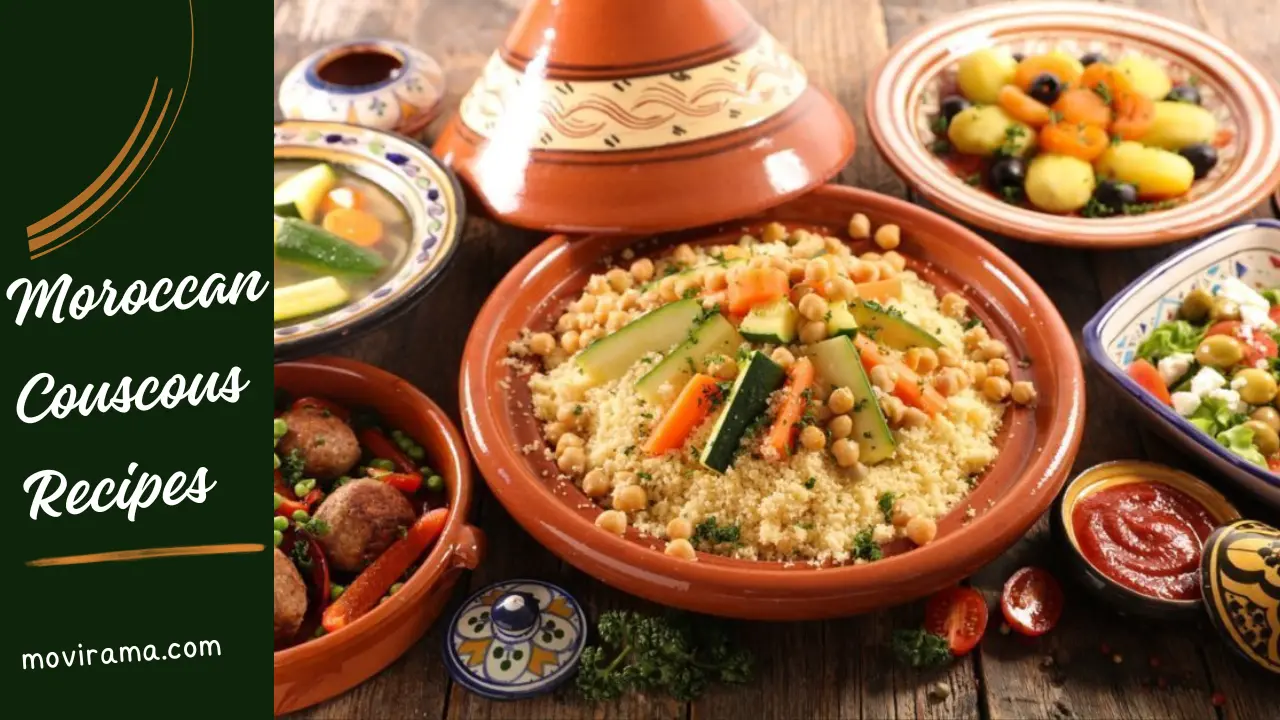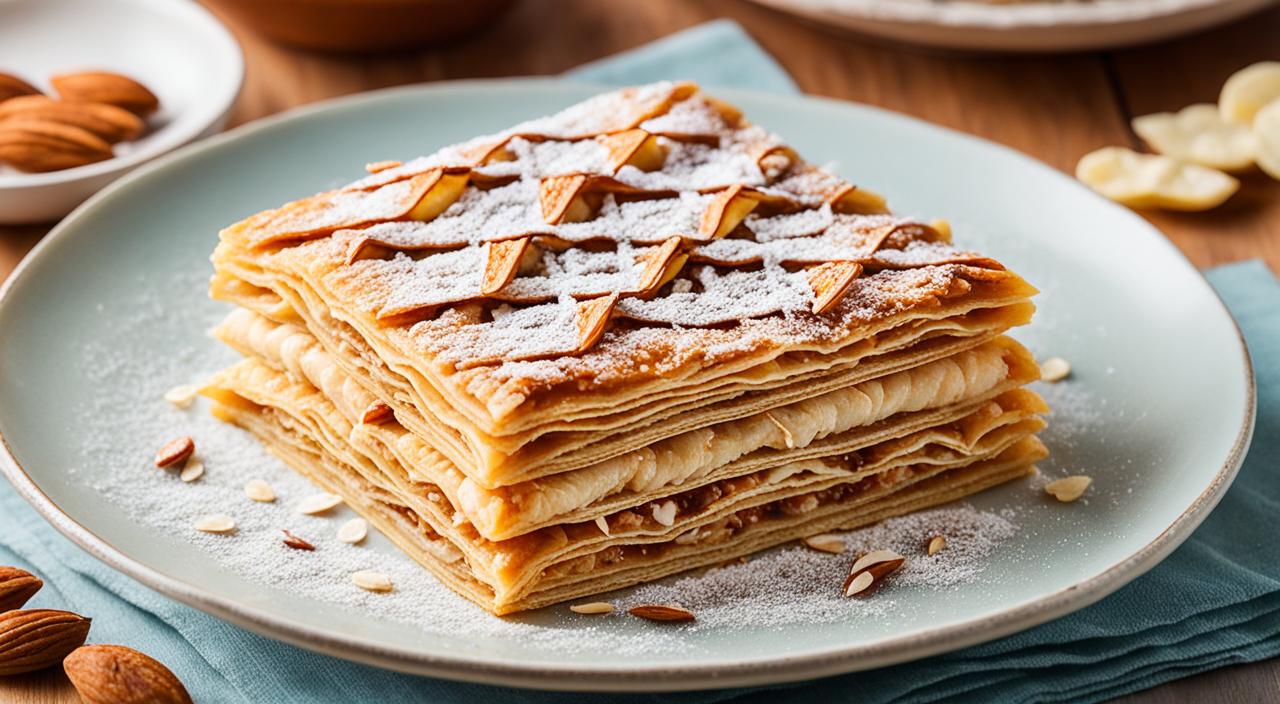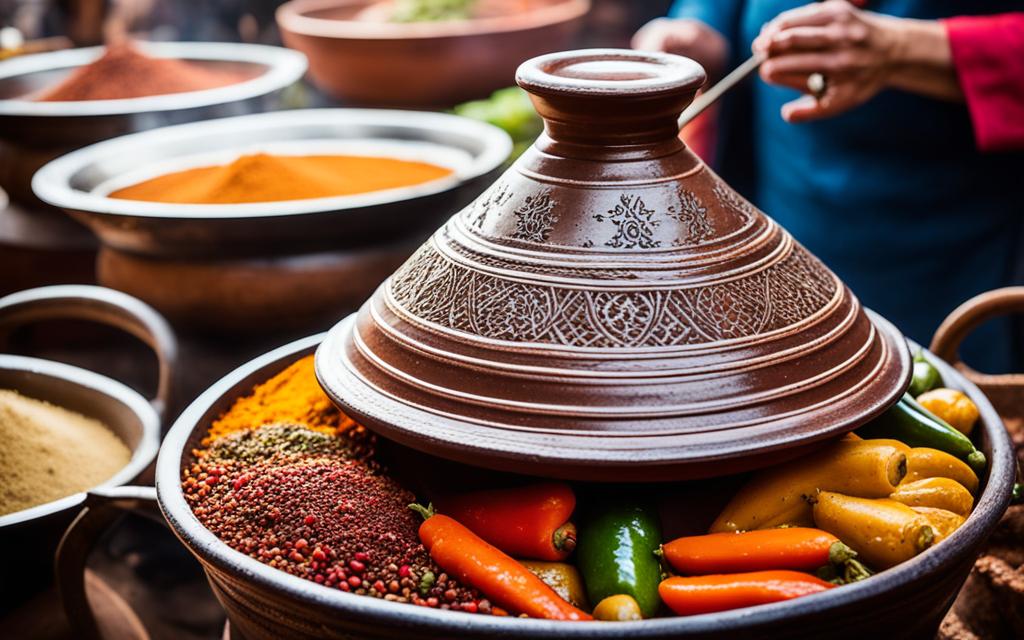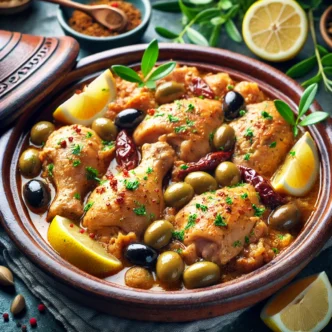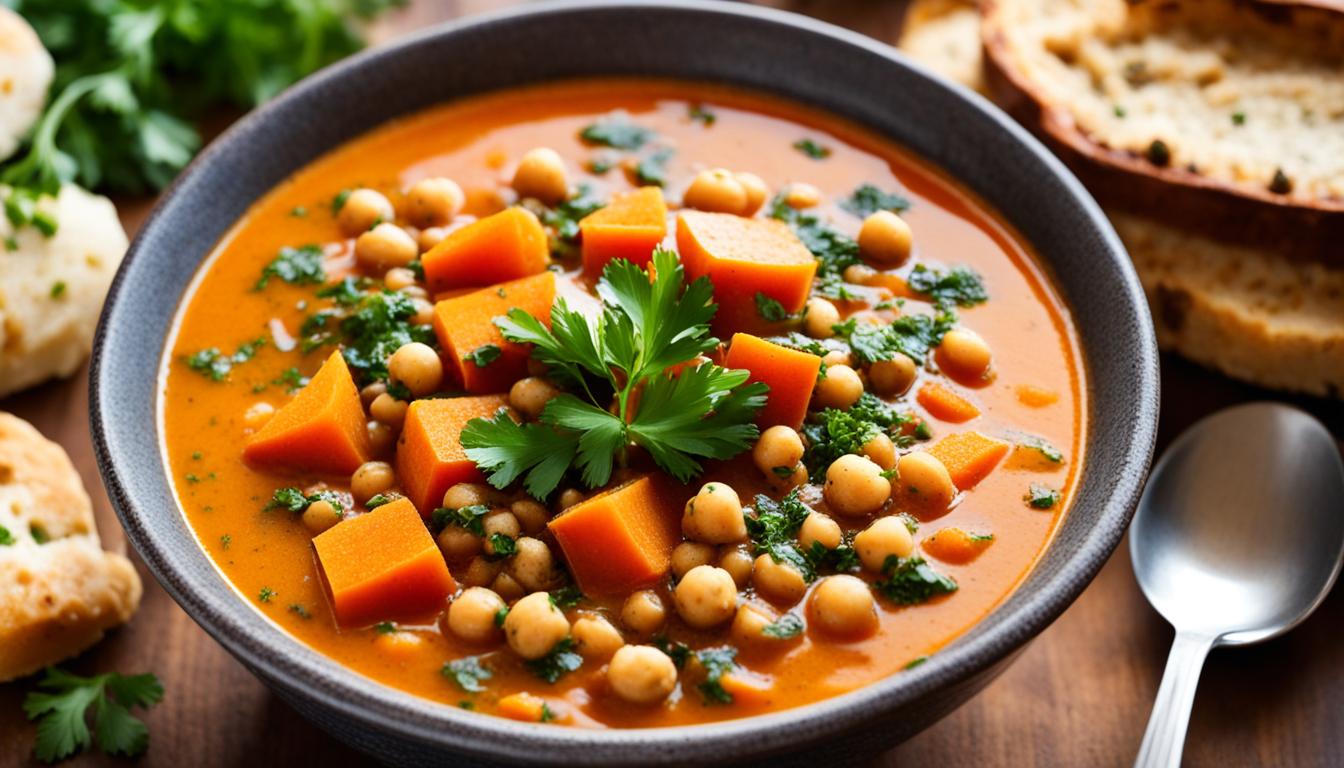Moroccan Couscous
Are you equipped to start a tasty journey through Morocco’s meal scene? Moroccan couscous is an essential dish in North African delicacies. It’s flexible and delicious, making it a want-to-have for domestic chefs. Let’s dive into the sector of semolina-based sincere pasta and its top-notch flavors.
Couscous has been a big part of Moroccan meals for a long time. It’s a way for families to accumulate and share a meal. With its combo of spices, slight greens, and juicy meats, Moroccan couscous takes you right away to the energetic markets of Morocco.
Key Takeaways
- Couscous is a traditional and cherished dish in North African delicacies.
- It is a semolina-based total pasta regularly served with hundreds of stewed greens, meat, and flavorful broth.
- Couscous is a staple food in Morocco and is historically cherished each Friday.
- This article will provide suitable Couscous recipes, traditional cooking techniques, and unique flavor variations.
- Discover how to deliver the vibrant tastes of Morocco to your non-public kitchen.
What is Moroccan Couscous?
Moroccan couscous is a small, touchy pasta made from semolina wheat flour. It’s a vital part of North African delicacies. It’s regularly served on Fridays, bringing families together for a unique meal.
The dish consists of fluffy couscous, slow-cooked greens, slight meat, and a rich broth, which makes it a cherished dish in Moroccan food traditions.
Traditional Moroccan Couscous Dish
The conventional Moroccan couscous is a feast for the senses. It’s steamed until it’s mild and fluffy, then layered with slow-cooked substances.
These encompass easy lamb or chook, colorful greens like carrots and zucchini, and chickpeas. The dish is topped with a flavorful broth that combines all tastes.
Couscous vs. Other Grains
When comparing couscous vs. rice or couscous vs. bulgur, couscous sticks out. It’s made from semolina pasta, which makes it mild and touchy. This makes it extraordinary compared to heartier rice or bulgur.
This semolina pasta quality makes couscous flexible. It can be paired with many Moroccan meal traditions and flavors.
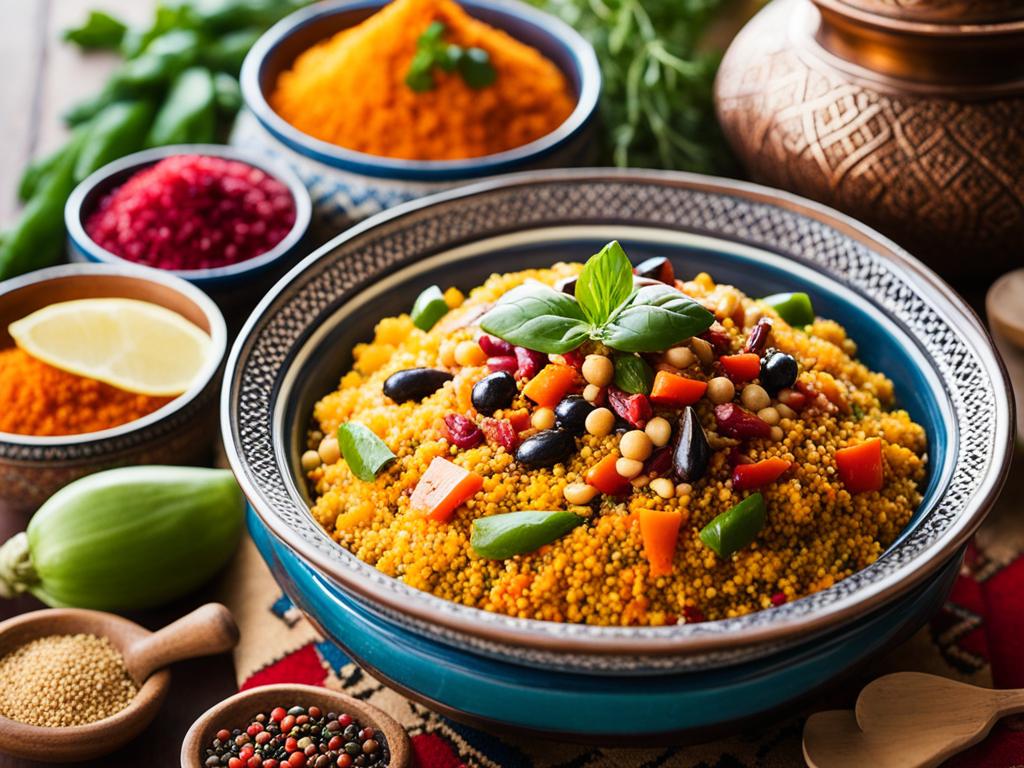
Classic Couscous Recipe
Enjoy the wealthy and flavorful conventional Moroccan couscous recipe passed down for generations. It can make fluffy, homemade Moroccan couscous with slow-cooked lamb or pork. Dish: The dish includes sparkling greens like carrots, zucchini, and eggplant, all in a richly spiced broth.
The mystery to the excellent couscous cooking approach is inside the steaming. First, blend the couscous elements and steam until they are mild and airy. Then, serve with the fragrant stew on top. This approach makes a dish that tastes like Marrakech’s colorful markets.
Warm spices like cumin, ginger, paprika, and saffron give the traditional Moroccan couscous recipe its precise flavor. The sluggish-cooked stew makes the couscous rich and savory, creating an excellent combination of textures and tastes in each chunk.
“The thriller to the proper Moroccan couscous is in the cautious steaming and the mixture of spices that infuse the dish with a high-quality depth of taste.”
If you like Moroccan delicacies or are curious, this conventional Moroccan couscous recipe is a must-try. Prepare for smooth meat, clean greens, and fluffy, spice-stuffed, self-made Moroccan couscous.
Couscous with Vegetables
Moroccan couscous is fantastic for vegetarians and vegans. It’s terrific with sparkling, colorful vegetables, which makes the dish appealing and showcases Moroccan flavors.
Veggie Variations
Common veggies in Moroccan vegetarian Moroccan couscous are:
- Carrots, diced or sliced.
- Zucchini, chopped
- Eggplant, cubed
- Turnips, peeled and diced.
- Chickpeas, cooked and drained.
Preparing the Couscous
To get that fluffy couscous texture:
- Study the steps.
- Steam the couscous until it’s miles gentle and mild.
- Blend it with the veggies and a delectable broth.
Adding a bit of olive oil to the broth makes it even higher.
VegetablePreparationCooking TimeCarrots peel and dice10-15 minutesZucchiniChop into half-inch pieces8-12 minutesEggplant peel and cube12-18 minutesTurnipsPeel and dice15-20 minutesChickpeasRinse and drainN/A
Couscous Recipes
There’s more to Moroccan couscous than the traditional recipe. You can strive for top-notch variations using numerous Moroccan spice blends. You can also add dried fruit, toasted nuts, or easy herbs as couscous garnishes.
Unique Moroccan Couscous Flavors
Cumin, ginger, cinnamon, and saffron give Moroccan couscous its deep, fragrant flavor. You could make warm, candy, or complicated couscous by converting the spice mix.
Spices and Seasonings
- Ras el hanout: A traditional Moroccan spice aggregate that regularly includes cardamom, cloves, and rose petals.
- Toasted spices: Lightly toasting complete spices like cumin seeds or coriander can decorate their aroma and flavor.
- Preserved lemons: The salty, tangy flavor of preserved lemons can add an exact twist to Moroccan couscous.
Garnishes and Toppings
Adding revolutionary couscous garnishes ought to make the dish stand out. Try sprinkling chopped smooth herbs, toasted nuts, or a yogurt sauce on top.
“Moroccan delicacies are all approximate layers of taste, and couscous is the splendid canvas to show off the use of several spice palettes.”
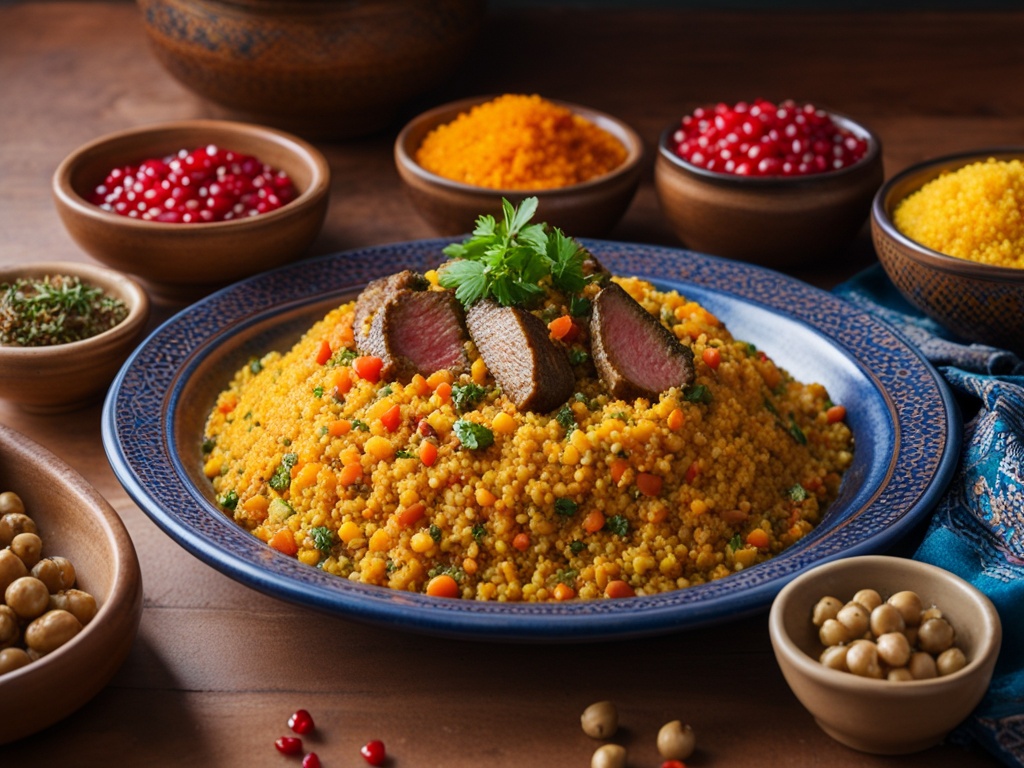
Traditional Cooking Method
Preparing authentic Moroccan couscous requires a unique touch. At the middle is the couscoussier, a completely unique pot with a steamer on pinnacle. In this format, we may want to allow the couscous to steam while the meat and greens put together dinner beneath.
This method makes the couscous fluffy and full of taste. The steam from the stew beneath cooks the couscous properly, creating a nicely balanced dish.
Using a Couscoussier
A couscoussier is the conventional tool for couscous, but you may also use an everyday pot and steamer. The purpose is to steam the cabbage while the other ingredients simmer.
- Fill the bottom pot of the casserole with meat, veggies, and broth.
- Put the steamer insert on top, ensuring it fits well.
- Add couscous grains to the steamer and cowl, and simmer until fluffy.
Whether with a couscoussier or a makeshift setup, this approach infuses the couscous with wealthy Moroccan flavors. It makes a dish that is very proper and scrumptious.
Serving Couscous
Moroccan couscous is frequently served in a massive bowl with a flavorful stew. This makes the meal enjoyable, like a circle of relatives event. Small bowls of more excellent broth are also given out, so every person can upload extra to their couscous.
Some humans like to mix the couscous and stew into balls, which adds a fun touch to the meal. We should ensure that site visitors experience the food in an exact way, similar to Morocco.
Couscous is a critical dish in Moroccan cuisine. It can be the foundation or a side dish for exclusive dishes like tagines or harira soup. Its versatility makes it perfect for many meals.
- Couscous Serving SuggestionsCouscous Presentation IdeasServe as a pinnacle dish with vegetable or meat stew
- Use as an element to a tagine or harira soup
- Combine with roasted vegetables and herbs
- Enjoy as a base for grilled or roasted proteins
- Serve in a massive, shallow bowl surrounded with the aid of stew
- Provide small bowls of more excellent broth for diners
- Allow traffic to combine couscous and stew into balls
- Garnish with sparkling herbs, toasted nuts, or dried fruit
Using traditional approaches to serve Moroccan couscous should make your traffic feel like they may be in North Africa. It’s a top-notch manner that makes your meal more real and precise.
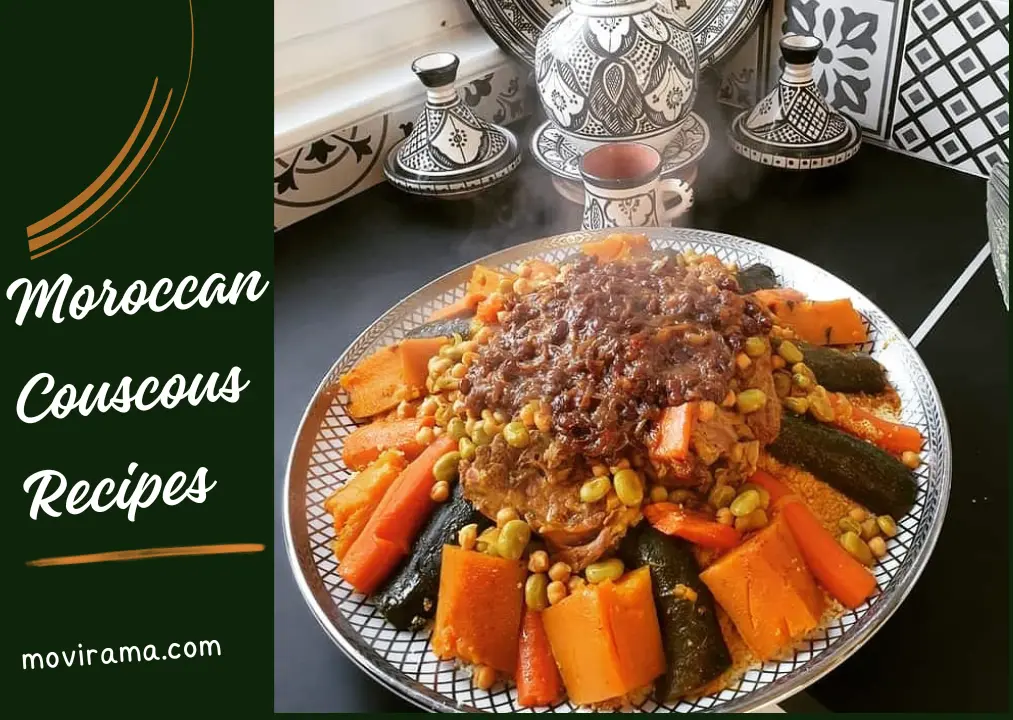
Storing Leftover Couscous
Storing leftover Moroccan couscous proper is the pinnacle of playing it absolutely. Whether you made a huge batch for a meal or have more from a Moroccan dish, knowing how to save it is critical. This way, you may enjoy the flavors for longer days.
When storing cooked couscous, keep it and any meat or vegetables separate. This causes the couscous to become fluffy and slight. You can preserve it in an airtight container inside the refrigerator for as much as five days.
To reheat couscous, integrate it with the stew or sauce in a pot and heat it over medium heat. If it is too dry, add a few broths or water, ensuring it remains moist and appealing.
For couscous meal prep that lasts, freeze it well. Put the couscous and stew into man or woman portions and freeze them one after the other. When you want to devour it, thaw and reheat everything collectively for a fast Moroccan meal.
Learning how to save and reheat leftover Moroccan couscous will ensure that you do not waste any of your delicious meals and can revel in them over and over.
Additional Couscous Recipes to Try
Beyond the classic Moroccan couscous dish, there are numerous quality variations. These variations showcase the colorful flavors of Moroccan cuisine. Many alternatives exist to Moroccan chicken couscous, Moroccan lamb couscous, and Moroccan vegetarian couscous.
A Moroccan chicken couscous features smooth bird thighs with a fragrant combination of spices and greens, served atop a mattress of fluffy couscous. For a stepped-forward flavor, try a Moroccan lamb couscous. It uses succulent lamb shoulder or shanks, gradually cooked until the beef falls off the bone.
Vegetarians can experience Moroccan couscous, too. A Moroccan vegetarian couscous specializes in roasted vegetables like zucchini, bell peppers, and eggplant. It additionally consists of the nutty texture of chickpeas.
RecipeProteinVegetablesSpicesMoroccan Chicken CouscousChicken ThighsCarrots, Onions, and Garbanzo BeansCumin, Cinnamon, PaprikaMoroccan Lamb CouscousLamb ShoulderTomatoes, Zucchini, EggplantHarissa, Coriander, TurmericMoroccan Vegetarian CouscousChickpeasBell Peppers, Squash, and CauliflowerCumin, Cinnamon, Ginger
Whether you’re in the mood for a Moroccan fowl couscous, a hearty Moroccan lamb couscous, or a vibrant Moroccan vegetarian couscous, the recipes are a top-notch way to discover Moroccan flavors. They assist you in enjoying Moroccan delicacies from your non-public kitchen.
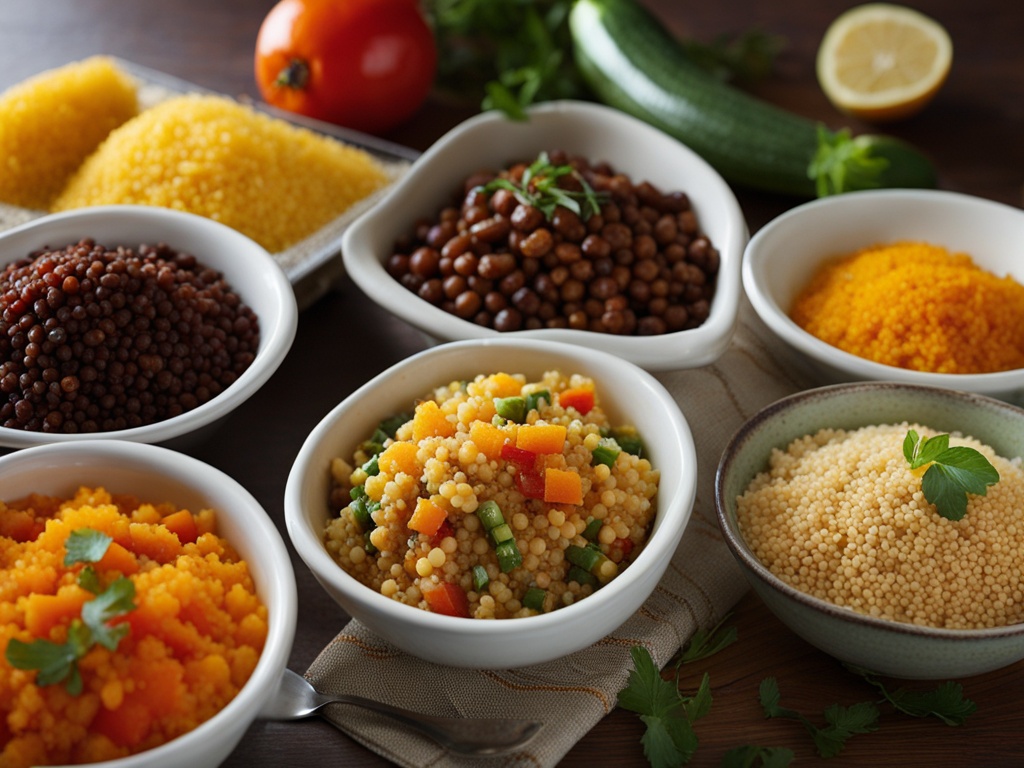
Conclusion
Moroccan couscous is a culinary journey that mixes North African flavors with semolina pasta’s consolation. It’s first-class for the ones curious about the advantages of Moroccan delicacies or, without a doubt, looking to try something new. This dish will satisfy you and become a favorite in your food.
With the couscous cooking guidelines, everyone can learn to make it seasoned. You can try one-of-a-kind flavors and create your unique couscous dishes. Whether it’s miles with vegetables or lamb, the options are infinite.
Moroccan couscous is more than food; it’s a way to hook up with others over a delicious meal. It’s a risk to discover the Moroccan lifestyle and enjoy the agency of loved ones. So, begin your non-public Moroccan cooking adventure and experience the marvel of this dish.
You may also like :
Moroccan Vegetable Harira Soup Recipe – Moroccan Cuisine
Delicious Moroccan Pastilla Recipes
Sardine Pizza Italian Cuisine: A Tasty Twist
External link :
Wkipedia – Moroccan couscous
FAQ
What is couscous?
Moroccan couscous is a small, granular pasta made from semolina wheat flour. It’s a key meal in North African countries like Morocco, and it’s frequently eaten on Fridays as part of a huge family meal.
How is conventional Moroccan couscous organized?
Traditional Moroccan couscous is made with fluffy, slow-cooked lamb or red meat and easy vegetables like carrots, zucchini, and eggplant. It’s also seasoned with cumin, ginger, paprika, and saffron.
How does couscous range from one-of-a-kind grains?
Couscous is different from excellent grains due to its slight and airy texture. It’s a small, granular pasta made from semolina wheat flour, no longer a natural grain.
Can couscous be made vegetarian or vegan?
Yes, you could make Moroccan couscous without meat by using a variety of vegetables. Common veggies include cauliflower, eggplant, turnips, and chickpeas.
What spices are typically carried out in Moroccan couscous?
Moroccan couscous uses spices like cumin, ginger, cinnamon, and saffron. These spices upload deep, aromatic flavors. You can regulate them to make the couscous more or a whole lot less incredibly spiced, sweet, or complicated.
What is a couscoussier, and in what manner is it used?
A couscoussier is a unique pot used to make Moroccan couscous. It has a steamer on the pinnacle for the couscous and a pot underneath for the beef and veggies. This technique makes the custard fluffy and full of taste.
How is Moroccan couscous traditionally served?
Moroccan couscous is served in a circle of relatives in a vast bowl with stew. Small bowls of more excellent broth are available for everyone to add as they prefer.
How can leftover couscous be saved and reheated?
You can keep leftover Moroccan couscous in the refrigerator for 5 days. Keep the couscous and stew separate to keep away from a soggy couscous—reheat by mixing them collectively in a pot and warming over medium-warm temperature. Add broth or water if it’s miles too dry.
